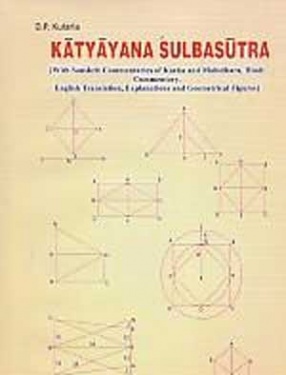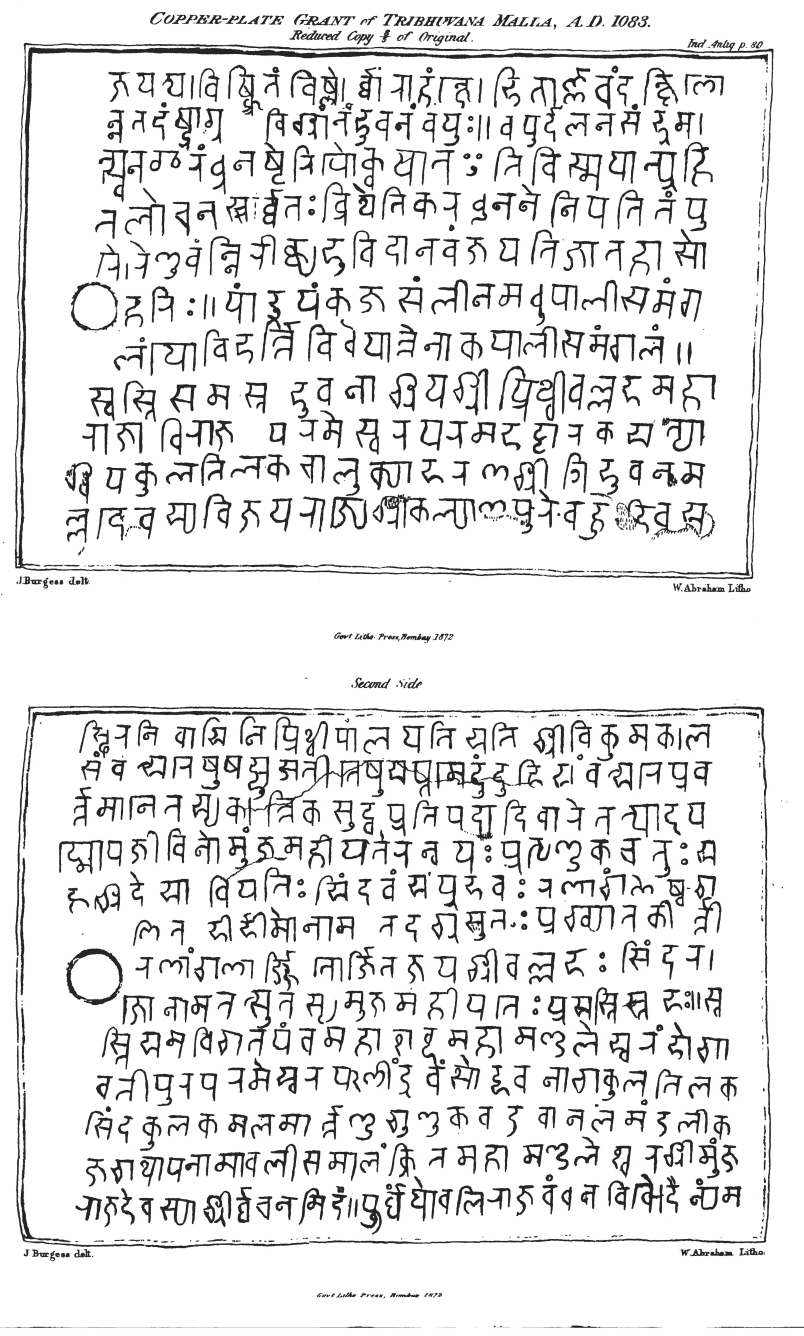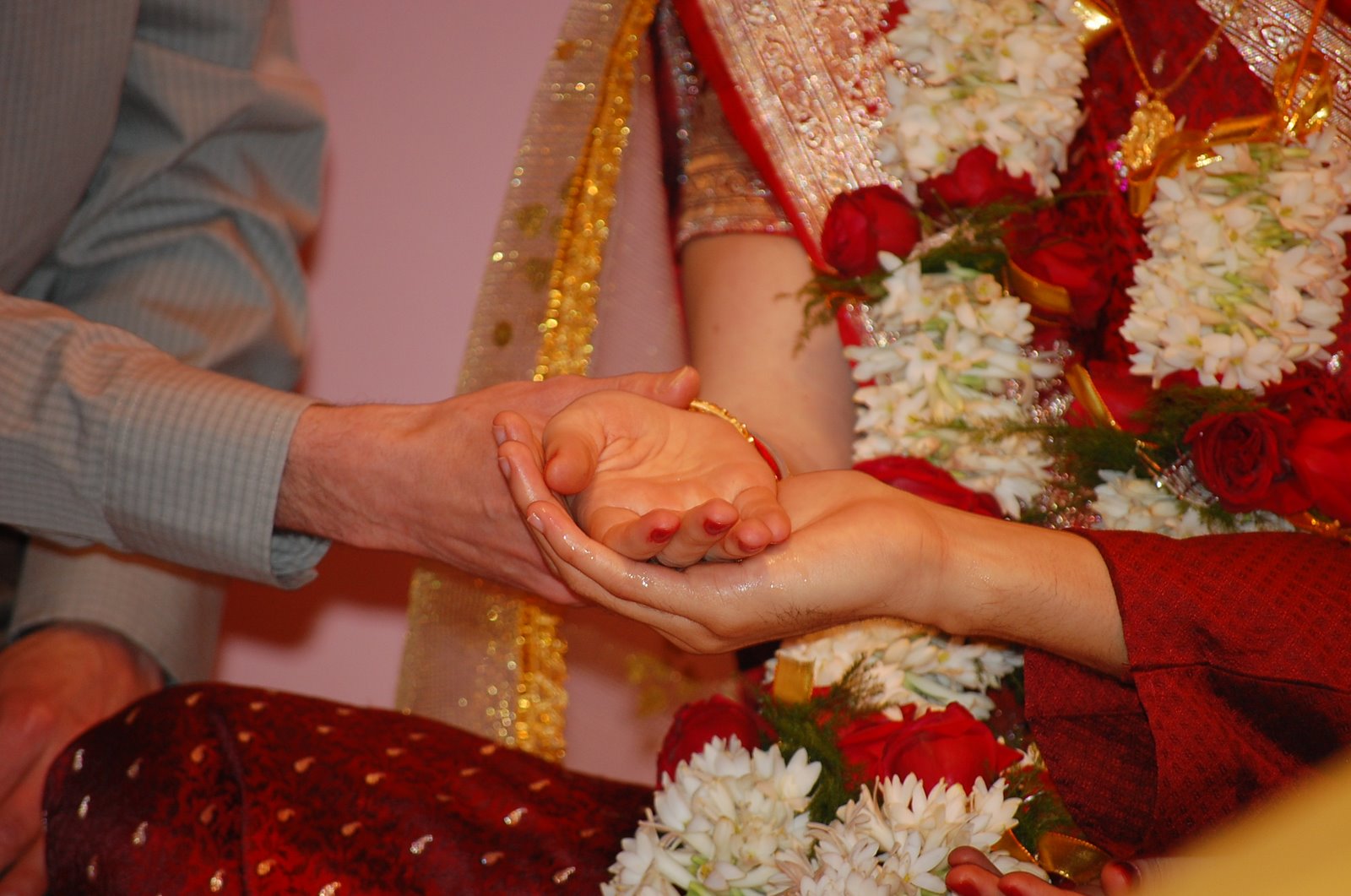|
Grhya
Kalpa () means "proper, fit" and is one of the six disciplines of the Vedānga, or ancillary science connected with the Vedas – the scriptures of Hinduism. This field of study is focused on the procedures and ceremonies associated with Vedic ritual practice.James Lochtefeld (2002), "Kalpa" in The Illustrated Encyclopedia of Hinduism, Vol. 1: A–M, Rosen Publishing, , p. 339. The major texts of Kalpa Vedanga are called ''Kalpa Sutras'' in Hinduism. The scope of these texts includes Vedic rituals, rites of passage rituals associated with major life events such as birth, wedding and death in family, as well as personal conduct and proper duties in the life of an individual. Most Kalpasutras texts have experienced interpolation, changes and consequent corruption over their history, and Apasthamba Kalpasutra ancillary to the Yajurveda may be the best preserved text in this genre. Kalpa Sutras are also found in other Indian traditions, such as Jainism. Etymology Kalpa is a Sanskri ... [...More Info...] [...Related Items...] OR: [Wikipedia] [Google] [Baidu] |
Sanskara (rite Of Passage)
Samskara (Sanskrit: संस्कार, IAST: , sometimes spelled ''samskara'') are sacraments in Hinduism and other Indian religions, described in ancient Sanskrit texts, as well as a concept in the karma theory of Indian philosophies. The word literally means "putting together, making perfect, getting ready, to prepare", or "a sacred or sanctifying ceremony" in ancient Sanskrit and Pali texts of India. In the context of karma theory, samskaras are dispositions, characters or behavioural traits that exist as default from birth or prepared and perfected by a person over one's lifetime, that exist as imprints on the subconscious according to various schools of Hindu philosophy such as the Yoga school. These perfected or default imprints of karma within a person, influences that person's nature, response and states of mind.Stephen H. Phillips (2009), Yoga, Karma, and Rebirth: A Brief History and Philosophy, Columbia University Press, , Chapter 3 In another context, Samskara ... [...More Info...] [...Related Items...] OR: [Wikipedia] [Google] [Baidu] |
Yajurveda
The ''Yajurveda'' (, , from यजुस्, "worship", and वेद, "knowledge") is the Veda primarily of prose mantras for worship rituals.Michael Witzel (2003), "Vedas and Upaniṣads", in ''The Blackwell Companion to Hinduism'' (Editor: Gavin Flood), Blackwell, , pages 76–77 An ancient Vedic Sanskrit text, it is a compilation of ritual-offering formulas that were said by a priest while an individual performed ritual actions such as those before the yajna fire. Yajurveda is one of the four Vedas, and one of the scriptures of Hinduism. The exact century of Yajurveda's composition is unknown, and estimated by Witzel to be between 1200 and 800 BCE, contemporaneous with Samaveda and Atharvaveda. The Yajurveda is broadly grouped into two – the "black" or "dark" (''Krishna'') Yajurveda and the "white" or "bright" (''Shukla'') Yajurveda. The term "black" implies "the un-arranged, unclear, motley collection" of verses in Yajurveda, in contrast to the "white" which implies ... [...More Info...] [...Related Items...] OR: [Wikipedia] [Google] [Baidu] |
Baudhayana Sutras
The (Sanskrit: बौधायन सूत्रस् ) are a group of Vedic Sanskrit texts which cover dharma, daily ritual, mathematics and is one of the oldest Dharma-related texts of Hinduism that have survived into the modern age from the 1st-millennium BCE. They belong to the ''Taittiriya'' branch of the Krishna Yajurveda school and are among the earliest texts of the genre.. In relative chronology, they predate Apastamba, Āpastamba, which is dated by Robert Lingat to the ''sutra'' period proper, between c. 500 to 200 BCE. Robert Lingat, The Classical Law of India, (Munshiram Manoharlal Publishers Pvt Ltd, 1993), p. 20 The Baudhayana sūtras consist of six texts: # the Baudhayana Shrauta Sutra, , probably in 19 (questions), # the in 20 (chapters), # the in 4 , # the Grhyasutra, Grihyasutra in 4 , # the Dharmasutra, in 4 and # the Sulba Sutras, in 3 . The ' is noted for containing several early mathematical results, including an approximation of the squ ... [...More Info...] [...Related Items...] OR: [Wikipedia] [Google] [Baidu] |
Rigveda
The ''Rigveda'' or ''Rig Veda'' (, , from wikt:ऋच्, ऋच्, "praise" and wikt:वेद, वेद, "knowledge") is an ancient Indian Miscellany, collection of Vedic Sanskrit hymns (''sūktas''). It is one of the four sacred canonical Hindu texts (''śruti'') known as the Vedas. Only one Shakha of the many survive today, namely the Shakala Shakha, Śakalya Shakha. Much of the contents contained in the remaining Shakhas are now lost or are not available in the public forum. The ''Rigveda'' is the oldest known Vedic Sanskrit text. Its early layers are among the oldest extant texts in any Indo-European language. Most scholars believe that the sounds and texts of the ''Rigveda'' have been orally transmitted with precision since the 2nd millennium BCE, through Indian mathematics#Styles of memorisation, methods of memorisation of exceptional complexity, rigour and fidelity, though the dates are not confirmed and remain contentious till concrete evidence surfaces. Philolog ... [...More Info...] [...Related Items...] OR: [Wikipedia] [Google] [Baidu] |
Sutra
''Sutra'' ()Monier Williams, ''Sanskrit English Dictionary'', Oxford University Press, Entry fo''sutra'' page 1241 in Indian literary traditions refers to an aphorism or a collection of aphorisms in the form of a manual or, more broadly, a condensed manual or text. Sutras are a genre of ancient and medieval Indian texts found in Hinduism, Buddhism and Jainism. In Hinduism, sutras are a distinct type of literary composition, a compilation of short aphoristic statements.Gavin Flood (1996), ''An Introduction to Hinduism'', Cambridge University Press, , pages 54–55 Each sutra is any short rule, like a theorem distilled into few words or syllables, around which teachings of ritual, philosophy, grammar, or any field of knowledge can be woven. The oldest sutras of Hinduism are found in the Brahmana and Aranyaka layers of the Vedas. Every school of Hindu philosophy, Vedic guides for rites of passage, various fields of arts, law, and social ethics developed respective sutras, ... [...More Info...] [...Related Items...] OR: [Wikipedia] [Google] [Baidu] |
Vedas
FIle:Atharva-Veda samhita page 471 illustration.png, upright=1.2, The Vedas are ancient Sanskrit texts of Hinduism. Above: A page from the ''Atharvaveda''. The Vedas ( or ; ), sometimes collectively called the Veda, are a large body of religious texts originating in ancient India. Composed in Vedic Sanskrit, the texts constitute the oldest layer of Sanskrit literature and the oldest Hindu texts, scriptures of Hinduism. There are four Vedas: the Rigveda, the Yajurveda, the Samaveda and the Atharvaveda. Each Veda has four subdivisions – the Samhitas (mantras and benedictions), the Brahmanas (commentaries on and explanation of rituals, ceremonies and sacrifices – Yajñas), the Aranyakas (text on rituals, ceremonies, sacrifices and symbolic-sacrifices), and the Upanishads (texts discussing meditation, philosophy and spiritual knowledge).Gavin Flood (1996), ''An Introduction to Hinduism'', Cambridge University Press, , pp. 35–39A Bhattacharya (2006), ''Hindu Dharma: Introduc ... [...More Info...] [...Related Items...] OR: [Wikipedia] [Google] [Baidu] |
Shakha
A shakha () is a Hindu theological school that specializes in learning certain Vedic texts, or else the traditional texts followed by such a school.V. S. Apte. A Practical Sanskrit Dictionary, p. 913, left column.Monier-Williams, A Sanskrit-English Dictionary, p. 1062, right column. An individual follower of a particular school or recension is called a '. The term is also used in Hindu philosophy to refer to an adherent of a particular orthodox system. A related term ', ("conduct of life" or "behavior") is also used to refer to such a Vedic school: "although the words ' and ' are sometimes used synonymously, yet ' properly applies to the sect or collection of persons united in one school, and ' to the traditional text followed, as in the phrase ', (''"he recites a particular version of the Veda"'')". The schools have different points of view, described as "difference of (Vedic) school" ('). Each school would learn a specific Vedic (one of the "four Vedas" properly so-called), a ... [...More Info...] [...Related Items...] OR: [Wikipedia] [Google] [Baidu] |
Sacred Books Of The East
The ''Sacred Books of the East'' is a monumental 50-volume set of English translations of Asian religious texts, edited by Max Müller and published by the Oxford University Press between 1879 and 1910. It incorporates the essential sacred texts of Hinduism, Buddhism, Taoism, Confucianism, Zoroastrianism, Jainism, and Islam. All of the books are in the public domain in the United States, and most or all are in the public domain in many other countries. Electronic versions of all 50 volumes are widely available online. References External links {{wikisource, Sacred Books of the East, ''Sacred Books of the East''''Sacred Books of the East'' on archive.org (html) [...More Info...] [...Related Items...] OR: [Wikipedia] [Google] [Baidu] |
Shulba Sutras
The ''Shulva Sutras'' or ''Śulbasūtras'' (Sanskrit: शुल्बसूत्र; ': "string, cord, rope") are sutra texts belonging to the Śrauta ritual and containing geometry related to vedi (altar), fire-altar construction. Purpose and origins The Shulba Sutras are part of the larger corpus of texts called the Kalpa (Vedanga), Shrauta Sutras, considered to be appendices to the Vedas. They are the only sources of knowledge of Indian mathematics from the Vedic period. Unique Vedi (altar), Vedi (fire-altar) shapes were associated with unique gifts from the Gods. For instance, "he who desires heaven is to construct a fire-altar in the form of a falcon"; "a fire-altar in the form of a tortoise is to be constructed by one desiring to win the world of Brahman" and "those who wish to destroy existing and future enemies should construct a fire-altar in the form of a rhombus"., p. 387, "Certain shapes and sizes of fire-altars were associated with particular gifts that the sacrif ... [...More Info...] [...Related Items...] OR: [Wikipedia] [Google] [Baidu] |
Birth
Birth is the act or process of bearing or bringing forth offspring, also referred to in technical contexts as parturition. In mammals, the process is initiated by hormones which cause the muscular walls of the uterus to contract, expelling the fetus at a developmental stage when it is ready to feed and breathe. In some species, the offspring is precocial and can move around almost immediately after birth but in others, it is altricial and completely dependent on parenting. In marsupials, the fetus is born at a very immature stage after a short gestation and develops further in its mother's womb Pouch (marsupial), pouch. It is not only mammals that give birth. Some reptiles, amphibians, fish and invertebrates carry their developing young inside them. Some of these are Ovoviviparity, ovoviviparous, with the eggs being hatched inside the mother's body, and others are Viviparity, viviparous, with the embryo developing inside their body, as in the case of mammals. Human childbirth ... [...More Info...] [...Related Items...] OR: [Wikipedia] [Google] [Baidu] |
Dharmaśāstra
''Dharmaśāstra'' () are Sanskrit Puranic Smriti texts on law and conduct, and refer to treatises (shastras, śāstras) on Dharma. Like Dharmasūtra which are based upon Vedas, these texts are also elaborate law commentaries based on vedas, Dharmashastra themselves evolved from dharmshutra. There are many Dharmashastras, variously estimated to number from 18 to over 100. Each of these texts exists in many different versions, and each is rooted in Dharmasutra texts dated to the 1st millennium BCE that emerged from Kalpa (Vedanga) studies in the Vedic era. The textual corpus of Dharmaśāstra were composed in poetic verse, and are part of the Hindu Smritis, constituting divergent commentaries and treatises on ethics particularly duties, and responsibilities to oneself and family as well as those required as a member of society. The texts include discussion of Ashrama (stage), ashrama (stages of life), varna (Hinduism), varna (social classes), Puruṣārtha, purushartha (proper g ... [...More Info...] [...Related Items...] OR: [Wikipedia] [Google] [Baidu] |
Hindu Wedding
A Hindu wedding, also known as (, ) in Hindi, () in Marathi, () in Bhojpuri, () in Bengali, () or () in Odia, () in Tamil, () in Telugu, () in Kannada, and ''kalyanam'' (, ; ) in Malayalam and other languages, is the traditional marriage ceremony for Hindus. The weddings are very colourful, and celebrations may extend for several days and usually a large number of people attend the wedding functions. The bride's and groom's homes—entrance, doors, walls, floor, roof—are sometimes decorated with colors, flowers, lights and other decorations.Yee, A. (2008 May 17Sari nights and henna parties ''The Financial Times''. The word ''vivāha'' originated as a sacred union of two people as per Vedic traditions, i.e. what many call marriage, but based on cosmic laws and advanced ancient practices. Under Vedic Hindu traditions, marriage is viewed as one of the saṁskāras performed during the life of a human being, which are lifelong commitments of one wife and one hu ... [...More Info...] [...Related Items...] OR: [Wikipedia] [Google] [Baidu] |






